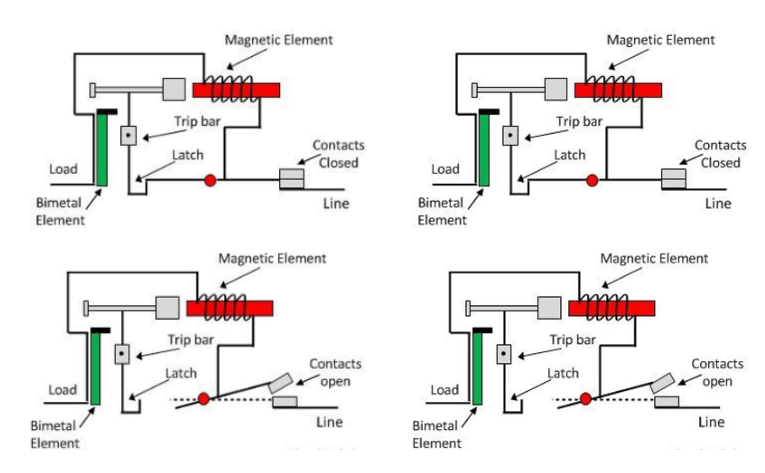To help you learn power quality analyzer working principle easily, this article will provide an in-depth analysis of the working principle of the power quality analyzer, including its basic structure, measurement parameters, working principle, and future development trends
Power Quality Analyzer is one of the core tools for power system monitoring and management. It plays an irreplaceable role in ensuring the normal operation of the power system, improving energy efficiency and reducing losses.
Power Quality Overview

Power quality refers to the stability and purity of voltage and current waveforms in a power system. Power quality problems may lead to equipment failure, energy waste, and even affect users’ normal power consumption. The power quality analyzer comprehensively monitors the power system to ensure that the power quality meets standards, thereby ensuring the efficient and stable operation of the power system.
Basic components of power quality analyzer

1. Sensors and measuring devices: The power quality analyzer is equipped with highly sensitive sensors for real-time monitoring of current and voltage waveforms. The measurement device is responsible for preliminary processing of the collected signals to ensure the accuracy and stability of the data.
2. Data acquisition and processing unit: As the core part, this unit is responsible for collecting, storing and processing data obtained by sensors. Advanced algorithms and models ensure comprehensive and accurate analysis of power quality.
3. Display and reporting module: Power quality analyzers are usually equipped with intuitive display screens and report generation functions, through which users can intuitively view power quality data and generate detailed reports to provide a basis for decision-making.
Measurement Parameters of Power Quality Analyzer

1. Monitoring of current and voltage: The power quality analyzer monitors the waveforms of current and voltage in real time through high-precision sensors, providing accurate power quality parameters, including voltage sag, flicker, current mutation, etc.
2. Harmonic analysis and detection: Harmonics are periodic vibrations in non-sinusoidal waveforms that may cause problems in power systems. The power quality analyzer’s harmonic analysis function detects and quantifies the presence of harmonics to ensure compliance with power quality standards.
3. Ripple analysis: Ripple is a rapid change in the AC waveform. Ripple analysis helps to evaluate the stability of the power supply and the sensitivity of the equipment to electricity, thereby further ensuring the quality of electric energy.
4. Event recording function: The power quality analyzer can record various events in the power system, such as voltage sag, current mutation, etc., which helps to analyze the cause and impact of the problem in depth.
Power quality analyzer working principle

As for power analyzer working principle, you can learn from the following 4 aspects in details:
1. Current and voltage collection and synchronization: Through highly sensitive sensors, the power quality analyzer collects current and voltage waveform data in real time and ensures their synchronization, providing accurate basic data for subsequent analysis.
2. Data processing algorithms and models: The collected data is processed through built-in data processing algorithms to establish corresponding power quality models. These algorithms not only analyze basic parameters, but can also detect and identify complex power quality issues such as harmonics and ripples.
3. Principle of harmonic analysis: By decomposing the waveform into harmonic components of different frequencies, the power quality analyzer can accurately identify and measure the presence of harmonics and provide users with reasonable improvement suggestions.
4. Principles of ripple and waveform analysis: The principles of ripple and waveform analysis are similar. By analyzing rapid changes in current and voltage waveforms, the instability and possible problems of the power supply are detected.
The future development trend of power quality analyzers
1. Technological innovation and development: Power quality analyzers will become more intelligent and accurate with the continuous innovation of technology. The new generation of sensing technology and data processing algorithms will provide higher accuracy and comprehensiveness for power quality monitoring.
2. Application prospects for smart grids: Power quality analyzers will be better integrated with smart grids and achieve real-time monitoring and intelligent regulation of power quality through interconnection with other smart devices. This will enable power quality problems to be discovered and resolved more quickly, providing stronger support for the safe and stable operation of the power system.
3. Trends in environmental protection and sustainability: Power quality analyzers will gradually pay more attention to environmental protection and sustainability. By optimizing power quality and reducing energy waste, it helps achieve better utilization of green energy and promotes the sustainable development of the power system.
Through an in-depth analysis of the working principle of the power quality analyzer, we not only fully understand its basic structure, measurement parameters and working principles, but also deeply analyze its practical application cases and future development trends. The continuous innovation and development of power quality analyzers will play a more important role in ensuring the safe and stable operation of the power system, improving energy efficiency and promoting sustainable development. With the continuous advancement of science and technology, power quality analyzers will become a key support tool for the intelligentization of power systems, helping to build a more reliable, efficient, and green energy future.






